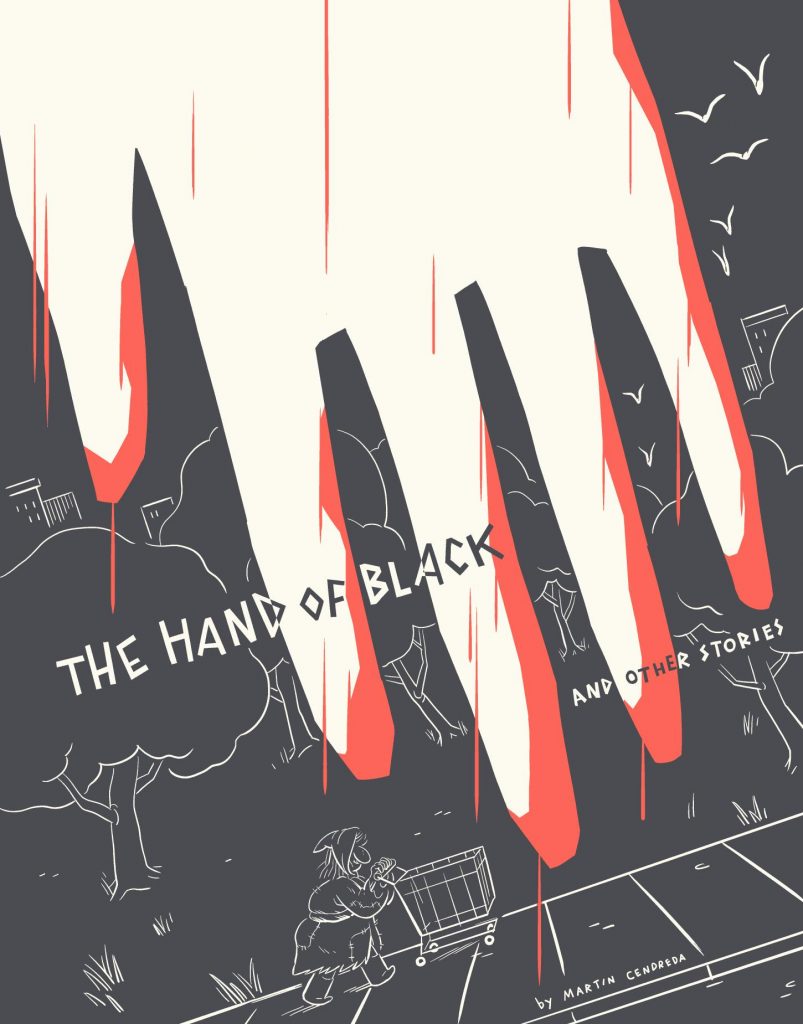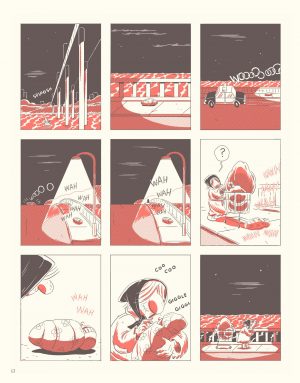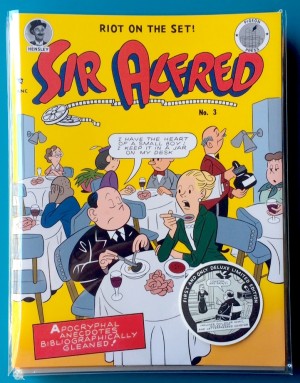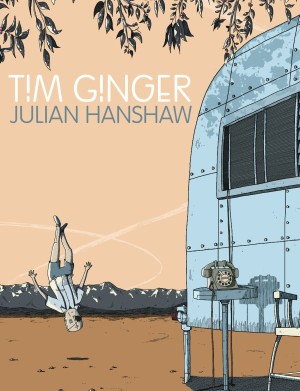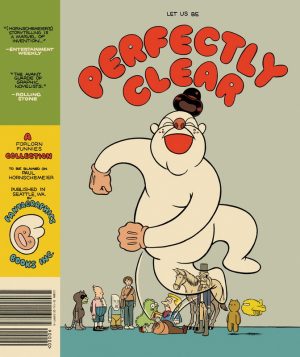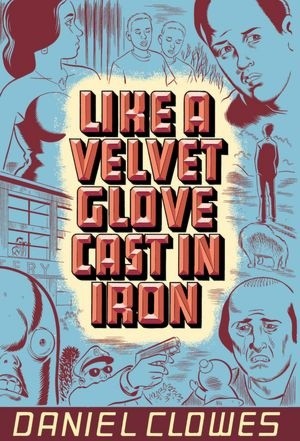Review by Ian Keogh
Although Martin Cendreda’s cartooning has a pleasing 1950s polish, there’s a reason his work is published under the F.U. Press imprint specialising in the descendants of the 1960s underground comics. Cendreda is best known for being an animator on iconoclastic cartoon series South Park, and his comic work has similar sensibilities, using the comforting to shock and undermine with a surrealist touch. His strips are drawn to a strictly traditional nine panel grid, and his style of cartooning, largely without words, features ordinary looking people, often in cheery locations, yet none of them reach the end of their stories in the best of health. In fact few survive them. Recurring characters are used, as are recurring themes, decay and dissatisfaction the most prominent, with the sea and the boardwalk leading to it also frequently seen.
The title story is the longest, and features a child abandoned at birth and picked up by an old homeless woman, possibly the same one seen in earlier stories. The child has one black hand, which decays all life it touches. An unnecessary nine page opening sequence suggests a vague reason, but the story could begin with the tenth page, the sample art including the dark joke of a police car just driving past an abandoned baby on a bridge. From there it meanders, occasionally jumping forward in time, incorporating dream sequences and eventually providing a solution. Even that’s followed by more meandering. ‘The Hand of Black’ occupies 35 pages, but if told in half the length there’d have been greater poignancy and resonance.
Cendreda groups the content of his bleak strips into ‘New Work’ and ‘Old Work’, but truth be told there’s little difference in terms of skill and outlook. It’s as if seeing Don’t Look Now was such a profoundly disturbing experience it’s something Cendreda’s attempting to purge through strips where demon children lure the good-hearted to their deaths, and other psychologically unsettling occurrences. It’s the same territory as the early work of Daniel Clowes, incorporating similar symbolism, but without his understanding of character. A killer features once, but otherwise the central figures are anonymous everymen sucked into circumstances beyond their control through curiosity or compulsion, and not knowing them in any respect means no bond is formed. The result is a well conveyed nightmare when reading a single strip, but going round in circles when the stories are read as a collection.
